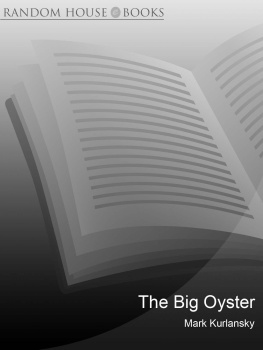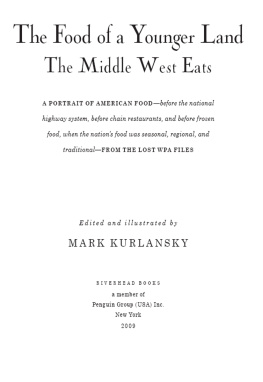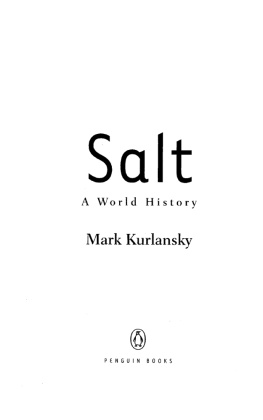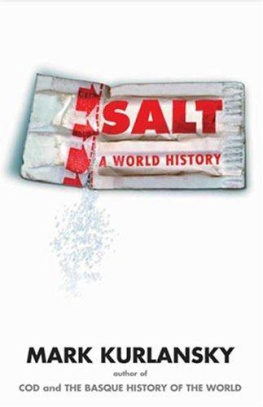Kurlansky - Paper: Paging Through History
Here you can read online Kurlansky - Paper: Paging Through History full text of the book (entire story) in english for free. Download pdf and epub, get meaning, cover and reviews about this ebook. year: 2016, publisher: W W Norton & Co Inc, genre: Religion. Description of the work, (preface) as well as reviews are available. Best literature library LitArk.com created for fans of good reading and offers a wide selection of genres:
Romance novel
Science fiction
Adventure
Detective
Science
History
Home and family
Prose
Art
Politics
Computer
Non-fiction
Religion
Business
Children
Humor
Choose a favorite category and find really read worthwhile books. Enjoy immersion in the world of imagination, feel the emotions of the characters or learn something new for yourself, make an fascinating discovery.
Paper: Paging Through History: summary, description and annotation
We offer to read an annotation, description, summary or preface (depends on what the author of the book "Paper: Paging Through History" wrote himself). If you haven't found the necessary information about the book — write in the comments, we will try to find it.
Paper: Paging Through History — read online for free the complete book (whole text) full work
Below is the text of the book, divided by pages. System saving the place of the last page read, allows you to conveniently read the book "Paper: Paging Through History" online for free, without having to search again every time where you left off. Put a bookmark, and you can go to the page where you finished reading at any time.
Font size:
Interval:
Bookmark:



Zhi, paper, signed by Sun Xiaoyun, a leading contemporary Chinese calligrapher, and dedicated to the author.
To Marian:
WITHOUT YOUR LOVE,
ITS A HONKY-TONK PARADE.
The human mind is often so awkward and ill-regulated in the career of invention, that it is at first diffident, and then despises itself. For it appears at first incredible that any such discovery should be made, and when it has been made, it appears incredible that it should so long have escaped mens research.
FRANCIS BACON, Novum Organum, 1620
CONTENTS


The Technological Fallacy
 PRIGHT AND PIOUS PIERRE LE VNRABLE, PETER THE venerable, a twelfth-century monk from the Cluny monastery in France, visited Spain and observed that the Arabs and Jews there, rather than using animal skins, wrote even religious texts on leaves made from old clotheswhat quality stationers today call 100 percent rag paper. He recognized that this was a clear sign of a degenerate society.
PRIGHT AND PIOUS PIERRE LE VNRABLE, PETER THE venerable, a twelfth-century monk from the Cluny monastery in France, visited Spain and observed that the Arabs and Jews there, rather than using animal skins, wrote even religious texts on leaves made from old clotheswhat quality stationers today call 100 percent rag paper. He recognized that this was a clear sign of a degenerate society.
Throughout history the role of technology and peoples reactions to it have been remarkably consistent, and those who worry about new technology and its impact on society would do well to reflect on the history of paper.
We tend to think of technology as referring only to the development of physical devices, mechanical in the nineteenth century, and now electronic. But the word can also be applied, as Merriam-Websters dictionary says, to any practical application of knowledge.
Technological inventions have always arisen from necessity. Numerous inventions preceded paper. First came spoken language, then drawing, then pictographs, then alphabets, then phoneticism, then writing, and then paper. Paper was then followed by printing, moveable type, typewriters, machine-driven printers, and electronic word processors and the electronic printers that go with them. As needs present themselves, solutions are found. Every idea engenders a need for another. In this case, the original inventionsspoken and then written languageare not physical, man-made objects, and so are not technology in the traditional sense of the word. But the way they function in and influence society and history is like a technologya founding technology. Speech was the wheel that eventually led to the cart that was paper.
Studying the history of paper exposes a number of historical misconceptions, the most important of which is this technological fallacy: the idea that technology changes society. It is exactly the reverse. Society develops technology to address the changes that are taking place within it. To use a simple example, in China in 250 BCE, Meng Tian invented a paintbrush made from camel hair. His invention did not suddenly inspire the Chinese people to start writing and painting, or to develop calligraphy. Rather, Chinese society had already established a system of writing but had a growing urge for more written documents and more elaborate calligraphy. Their previous toola stick dipped in inkcould not meet the rising demand. Meng Tian found a device that made both writing and calligraphy faster and of a far higher quality.
Chroniclers of the role of paper in history are given to extravagant pronouncements: Architecture would not have been possible without paper. Without paper, there would have been no Renaissance. If there had been no paper, the Industrial Revolution would not have been possible.
None of these statements is true. These developments came about because society had come to a point where they were needed. This is true of all technology, but in the case of paper, it is particularly clear.
As far as scholars can tell, the Chinese were the only people to invent papermaking, though the Mesoamericans may also have done so; because of the destruction of their culture by the Spanish, we cannot be sure. And yet paper came into use at very different times in very different cultures as societies evolved and developed a need for it and circumstances required a cheap and easy writing material.
Five centuries after paper was being used widely by the Chinese bureaucracy, Buddhist monks in Korea developed a need for paper also. They adopted the Chinese craft, and took it to Japan to spread their religion. A few centuries later, the Arabs, having become adept at mathematics, astronomy, accounting, and architecture, saw a need for paper and started making and using it throughout the Middle East, North Africa, and Spain.
The Europeans initially had no use for paper until more than a thousand years after the Chinese invented it. It was not that they had only just discovered the existence of paper, however. The Arabs had been trying to sell it to them for years. But it was not until they began learning the Arab ways of mathematics and science, and started expanding literacy, that parchment made from animal hidestheir previous writing materialbecame too slow and expensive to make in the face of their fast-growing needs.
The growth of intellectual pursuits and government bureaucracy, along with the spread of ideas and the expansion of commerce, is what led to papermaking. But its international growth was a remarkably slow process. The use of printing presses, steam engines, automobiles, and computers spread internationally over far shorter periods of time than did paper.
Paper seems an unlikely inventionbreaking wood or fabric down into its cellulose fibers, diluting them with water, and passing the resulting liquid over a screen so that it randomly weaves and forms a sheet is not an idea that would logically come to mind, especially in an age when no one knew what cellulose was. It is not an apparent next step like printing, which various societies would arrive at independently. Suppose no one had thought of paper? Other materials would have been found. Improved writing material had to be found, because the needs of society demanded it.
There are other important lessons to be learned from the history of technologyand other commonly held fallacies. One is that new technology eliminates old. This rarely happens. Papyrus survived for centuries in the Mediterranean world after paper was introduced. Parchment remains in use. The invention of gas and electric heaters has not meant the end of fireplaces. Printing did not end penmanship, television did not kill radio, movies did not kill theatre, and home videos did not kill movie theaters, although all these things were falsely predicted. Electronic calculators have not even ended the use of the abacus, and more than a century after Thomas Edison was awarded a patent for a commercially successful lightbulb in 1879, there are still four hundred candle manufacturers in the United States alone, employing some 7,000 workers with annual sales of more than $2 billion. In fact, the first decade of the twenty-first century showed a growth in candle sales, though the uses of candles have of course greatly changed. Something similar occurred with the manufacturing and use of parchment. New technology, rather than eliminating older technology, increases choices. Computers will no doubt change the role of paper, but it is extremely unlikely that paper will be eliminated.
Next pageFont size:
Interval:
Bookmark:
Similar books «Paper: Paging Through History»
Look at similar books to Paper: Paging Through History. We have selected literature similar in name and meaning in the hope of providing readers with more options to find new, interesting, not yet read works.
Discussion, reviews of the book Paper: Paging Through History and just readers' own opinions. Leave your comments, write what you think about the work, its meaning or the main characters. Specify what exactly you liked and what you didn't like, and why you think so.









